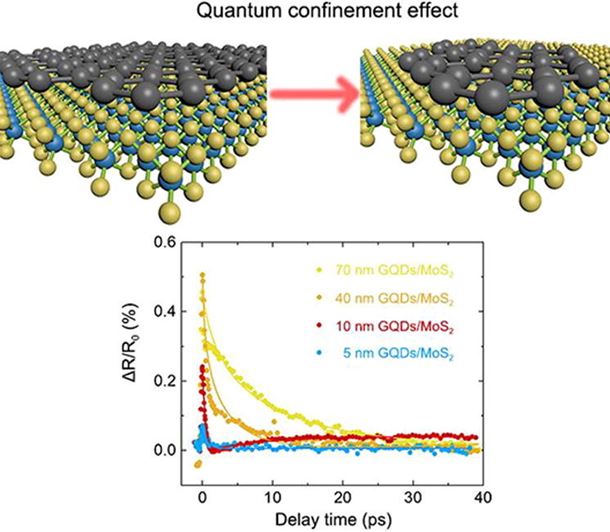Hangyong Shan, Ying Yu, Rui Zhang, Runtan Cheng, Dong Zhang, Yang Luo, Xingli Wang, Bowen Li, Shuai Zu, Feng Lin, Zheng Liu, Kai Chang, Zheyu Fang
Abstract: Van der Waals (VdW) heterostructures have emerged as promising materials for atomically thin optoelectronic and photovoltaic applications, where the efficient charge separation after photo-excitation is significant to enhance device performances. However, modulating the interfacial charge transfer is still challenging due to the weak interlayer VdW interaction. Revealing electron transfer and relaxation processes in heterostructures lays foundation to tune the interfacial dynamics and optoelectronic properties. Here, we realize the efficient modulation of relaxation channels in MoS2 monolayers and interfacial electron transfer by forming mixed-dimensional VdW heterostructures with graphene quantum dots (GQDs). With femtosecond pump–probe spectroscopy, the biphasic electron injection model and modified rate equations are employed to quantitatively solve interfacial transfer rates of mixed-dimensional VdW heterostructures. We find that the cascaded relaxation of hot electrons in GQDs that originates from the quantum confinement effect can intensively affect the interfacial dynamics. Our established model is instructive to optimize performances of future photon-harvesting devices based on mixed low-dimensional heterostructures.
Graphical abstract: We realize the efficient modulation of relaxation channels in MoS2 monolayers and interfacial electron transfer by forming mixed-dimensional VdW heterostructures with graphene quantum dots (GQDs) and find that the cascaded relaxation of hot electrons in GQDs that originate from the quantum confinement effect is the ultimate reason. With femtosecond pump–probe spectroscopy, the biphasic electron injection model and modified rate equations are employed to quantitatively solve the interfacial dynamics.

https://doi.org/10.1016/j.mattod.2019.01.015